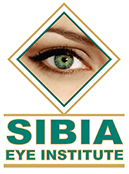Glaucoma Information
Glaucoma is a family of diseases that causes damage to the optic nerve if left untreated. Optic nerve damage first leads to a loss of peripheral (side) vision and eventually will affect central vision causing total blindness. Glaucoma is usually caused by increased pressure in the eye but can occur with normal eye pressure. Studies show that half of Americans who have glaucoma do not even realize it. This occurs because early on in the disease process there are little or no symptoms.Glaucoma is more likely in patients over the age of 40 but can be seen before then. There is a genetic component to glaucoma so having a parent or sibling with glaucoma increases your risk. Glaucoma is more prevalent in African Americans, Afro-Caribbean and certain Hispanic populations. The risk is also higher for patients who use steroids, either orally, intranasal or inhaled.Open-Angle Glaucoma
It is estimated that over two million Americans have some type of glaucoma and half of them do not know it. Ninety percent of glaucoma patients have open-angle glaucoma.The eye receives its nourishment from a clear fluid that circulates inside the eye. This fluid must be constantly returned to the blood stream through the eye’s drainage canal, called the trabecular meshwork. In the case of open-angle glaucoma, something has gone wrong with the drainage canal. When the fluid cannot drain fast enough, pressure inside the eye begins to build.This excess fluid pressure pushes against the delicate optic nerve, the cable that connects the eye to the brain. If the pressure remains too high for too long, irreversible vision loss can occur. Although open-angle glaucoma cannot be cured, it can usually be controlled and vision loss can be minimized.Diagnosing Glaucoma
We use specialized testing to determine the health of the optic nerve and to determine how glaucoma may be affecting the nerve.
Tonometry
The tonometry test measures the inner pressure of the eye. Usually drops are used to numb the eye. Then the doctor or technician will use a special device that measures the eye’s pressure.Perimetry
The perimetry test is also called a visual field test. During this test, you will be asked to look straight ahead and then indicate when a moving light passes your peripheral (or side) vision. This helps draw a “map” of your vision.Opthalmoscopy
Opthalmoscopy is used to examine the inside of the eye, especially the optic nerve. In a darkened room, the doctor will magnify your eye by using a slit lamp (an instrument with a small light on the end) and lenses. This helps the doctor look at the shape and color of the optic nerve.Gonioscopy
Gonioscopy is a painless eye test that checks if the angle where the iris meets the cornea is open or closed, showing if either open-angle or closed angle glaucoma is present.Treatment
The goal of treatment is to lower the pressure in the eye. There are three basic ways to do this: with medicines, laser surgery or filtration surgery.
Medicines come in pill and eye drop form. They work by either slowing the production of fluid within the eye or by improving the flow through the drainage meshwork. To be effective, most glaucoma medications must be taken between one to four times every day, without fail. Some of these medications have some undesirable side effects, so your doctor will work with you to find a medication that controls your pressure with the least amount of side effects. Medicines should never be stopped without consulting your doctor, and you should notify all of your other doctors about the medications you are taking.
Laser Trabeculoplasty treats the drainage canal. Requiring only numbing eye drops, the laser beam is applied to the trabecular meshwork resulting in an improved rate of drainage. When laser surgery is successful, it may reduce the need for daily medications.
If medication and laser are not adequately controlling your eye pressure, your doctor will speak with you about the surgical options.
Call us today to see how we can help diagnosing and treating glaucoma

